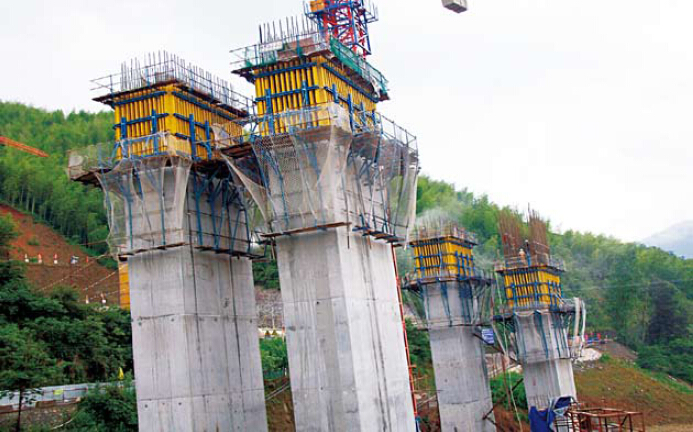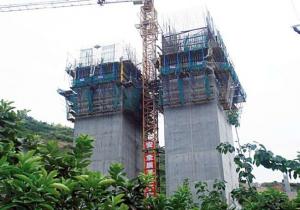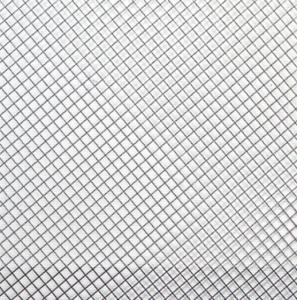Climbing Bracket for Formwork And Scaffolding System
- Loading Port:
- Tianjin
- Payment Terms:
- TT OR LC
- Min Order Qty:
- 50 m²
- Supply Capability:
- 1000 m²/month
OKorder Service Pledge
OKorder Financial Service
You Might Also Like
Climbing Bracket CB240 & CB210
They are framework brackets for supporting large-area wall formwork.
Typical applications for the CB240&CB210 are pier and column/shear wall/core walll/ in the
building.
CB210 has smaller size than CB240, it will be cost effective in some condition.
Characteristics:
◆ High bearing capacity
The high loading capacity of the brackets allow very large scaffold units. This saves the number
anchor points required as well as reducing climbing times.
◆ Simple moving procedure by crane
Through the strong connection of formwork together with the climbing scaffold, both can be moved
as a single climbing unit by crane. Thus valuable time-savings can be achieved.
◆ Fast striking process without a crane
With the retrusive set, large formwork elements can also be retracted quickly and a minimum of
effort.
◆ Safe with work platform
The platforms have assembled firmly with bracket and will be climbing together, without scaffolding
but can work safely in spite of your high location.


- Q:How does steel formwork compare to plastic formwork?
- Construction projects commonly utilize two types of formwork systems: steel formwork and plastic formwork. These systems possess distinct advantages and disadvantages, making them suitable for varying applications. Steel formwork is renowned for its durability and strength, enabling it to withstand heavy loads. Consequently, it is ideal for large-scale projects that necessitate repetitive formwork usage. Compared to plastic formwork, steel formwork boasts a lengthier lifespan, rendering it a cost-effective choice in the long term. It can be effortlessly tailored to meet specific project requirements, thereby permitting design flexibility. Moreover, steel formwork yields a smooth concrete surface finish, reducing the need for supplementary finishing work. Conversely, plastic formwork surpasses steel formwork in several aspects. Its lightweight nature facilitates easy handling and transportation, leading to expedited installation and dismantling times, thereby enhancing overall project efficiency. Plastic formwork is also corrosion-resistant and does not necessitate surface treatment or maintenance. Being reusable and recyclable, it embodies an environmentally friendly option. Furthermore, it possesses commendable insulation properties, thereby facilitating energy consumption reduction in buildings. Regarding cost, steel formwork generally incurs higher upfront expenses due to elevated material and manufacturing costs. Nevertheless, the prolonged lifespan and reusability of steel formwork offset the initial expenditure, rendering it a cost-effective decision for projects involving substantial concrete pouring. In conclusion, the selection between steel formwork and plastic formwork hinges upon specific project requisites. Steel formwork proves suitable for large-scale ventures necessitating durability and strength, whereas plastic formwork is more apt for smaller projects mandating swift installation and dismantling. Both alternatives possess their own merits and demerits, necessitating careful consideration of factors such as cost, project timeline, and design flexibility when arriving at a decision.
- Q:Are there any specific considerations for using steel formwork in earthquake-prone areas?
- In earthquake-prone areas, there are specific factors to consider when using steel formwork. Steel formwork is preferred in seismic regions due to its strength and durability. However, certain aspects need to be taken into account: 1. Flexibility is crucial. Steel formwork must be designed to withstand seismic forces and absorb and dissipate energy during an earthquake to minimize structural damage. 2. Connection details must be carefully engineered to ensure proper load transfer and resistance to seismic forces. Special attention should be given to joints and connections to prevent failure during an earthquake. 3. Additional reinforcement may be necessary to enhance the strength and stiffness of the steel formwork system. This can include extra steel bars, cross bracing, or diagonal struts to resist lateral forces. 4. Proper anchorage of the steel formwork is vital in earthquake-prone areas. It should be securely anchored to the foundation or structural elements to prevent displacement or movement during an earthquake. 5. Regular inspection and maintenance of the steel formwork system are essential in earthquake-prone areas. Any damage or wear should be promptly identified and repaired to maintain the system's integrity and stability. 6. Compliance with local building codes and regulations for seismic design is crucial. These codes provide guidelines and requirements for the design, installation, and use of formwork in earthquake-prone areas. By considering these specific factors, the use of steel formwork in earthquake-prone areas can enhance structural resilience and contribute to the overall safety and durability of construction projects.
- Q:Can steel formwork be used for both straight and curved walls?
- Steel formwork is versatile and can be utilized for both straight and curved walls. With its exceptional strength and durability, it is ideal for shaping walls of diverse sizes and shapes. Its flexibility allows for effortless adjustments and customization, enabling the creation of both straight and curved walls. The precision and accuracy offered by the steel formwork system ensures that the walls are constructed to the desired specifications. Moreover, the reusability of steel formwork makes it a cost-effective option for projects involving both straight and curved walls.
- Q:How does steel formwork impact the overall project management?
- Steel formwork can have a significant impact on the overall project management in various ways. First and foremost, steel formwork is known for its durability and longevity, which means it can be reused multiple times throughout the project. This reduces the need for frequent replacements and repairs, saving both time and money. Moreover, steel formwork provides a high level of accuracy and precision, ensuring that the concrete structures are built according to the specified dimensions and specifications. This not only enhances the quality of the project but also minimizes the chances of rework or corrective measures, thereby saving time and resources. Additionally, steel formwork offers greater flexibility and versatility compared to traditional wooden formwork. It can be easily adjusted and modified to accommodate changes in design or unforeseen circumstances during the construction process. This adaptability enables project managers to make on-site adjustments quickly and efficiently, keeping the project on track and minimizing delays. Furthermore, steel formwork is known for its faster installation and dismantling process. This allows for faster construction cycles, enabling project managers to meet tight deadlines and complete the project within the scheduled timeframe. The faster turnaround time also improves project efficiency and reduces overall project costs. Lastly, steel formwork is considered a safer option compared to other formwork materials. It provides a stable and secure platform for workers, minimizing the risk of accidents and injuries. By prioritizing worker safety, project managers can maintain a productive and efficient work environment. In conclusion, steel formwork has a positive impact on overall project management by enhancing durability, accuracy, flexibility, speed, and safety. Utilizing steel formwork can lead to improved project outcomes, reduced costs, and enhanced efficiency, ultimately contributing to the successful completion of the project.
- Q:What are some of the components of the combined steel template, what role?
- Two, the main equipment1, mechanical equipment, drill, grinding wheel cutting machine, according to the circular machine, electric wrenches and welding equipment, etc..2, the main tool hammer, iron ruler, steel ruler, wrench, wire brush, brush. Drums, crowbar, screwdriver, theodolite, level. Tower ruler.
- Q:Types of building templates? What is clear water template?
- Bamboo plywood template: is the earliest use of plain bamboo plywood template, has developed a bamboo bamboo plywood coated template, bamboo plywood, wood coating or coating bamboo plywood etc.
- Q:What are the common design considerations for steel formwork systems?
- Some common design considerations for steel formwork systems include the load capacity of the system, the stability and rigidity of the forms, the ease of assembly and disassembly, the ability to accommodate various concrete shapes and sizes, the durability and longevity of the materials, and the compatibility with other construction methods or systems. Additionally, factors such as cost, availability, and environmental impact may also be taken into account when choosing a steel formwork system.
- Q:How does steel formwork affect the overall cost of a construction project?
- The overall cost of a construction project can be significantly affected by steel formwork. Although the initial expense of steel formwork may be greater than other formwork options, it offers multiple advantages that can result in long-term cost savings. To begin with, steel formwork is highly durable and can be reused, making it a cost-effective choice for multiple construction projects. Unlike wood and other formwork materials, steel does not warp or degrade over time, reducing the need for expensive replacements or repairs. Furthermore, steel formwork provides enhanced structural stability, ensuring accurate and precise placement of concrete. This leads to decreased material wastage and a more efficient use of resources, ultimately reducing construction costs. In addition, steel formwork offers faster assembly and disassembly times compared to traditional formwork materials. The quick installation and removal process can significantly decrease labor costs and the overall duration of the project, resulting in increased productivity and potential savings on overhead expenses. Moreover, steel formwork is highly adaptable and can be customized to meet different project requirements. Its versatility allows for its use in various construction applications, such as forming complex shapes and designs. This flexibility reduces the need for expensive specialized formwork systems and enables cost-effective solutions tailored to specific project needs. Lastly, steel formwork is renowned for its excellent quality and precision, resulting in higher-quality concrete finishes. This can eliminate the need for additional finishing work, such as plastering or leveling, which can be expensive and time-consuming. In conclusion, while the initial cost of steel formwork may be higher than alternative materials, its durability, structural stability, faster assembly times, adaptability, and high-quality finishes can lead to significant cost savings throughout the construction project. Therefore, considering the long-term benefits and cost-effectiveness of steel formwork is crucial when evaluating the overall cost of a construction project.
- Q:Does steel formwork require any special equipment for installation?
- Indeed, special equipment is needed for the installation of steel formwork. To install it, one must assemble the steel panels into the desired shape and fasten them together. This typically entails utilizing specific tools like spanners, hammers, or hydraulic jacks to guarantee proper alignment and tightness of the formwork. Furthermore, robust lifting equipment such as cranes or forklifts might be required to safely transport and position the steel formwork panels. By employing specialized equipment, one can ensure the installation is conducted with precision and effectiveness, ultimately yielding a durable and expertly constructed formwork system.
- Q:How does steel formwork handle different concrete setting time requirements?
- Steel formwork is highly versatile and can easily accommodate different concrete setting time requirements. It provides a rigid and sturdy framework that supports the concrete during the setting process. The steel formwork allows for precise shaping and molding of the concrete, enabling it to take various forms and designs. Additionally, steel formwork offers adjustable features, such as adjustable joints and connectors, which allow for quick assembly and disassembly, making it efficient in meeting different concrete setting time requirements. Overall, steel formwork provides a reliable and adaptable solution for handling different concrete setting time requirements.
1. Manufacturer Overview |
|
|---|---|
| Location | |
| Year Established | |
| Annual Output Value | |
| Main Markets | |
| Company Certifications | |
2. Manufacturer Certificates |
|
|---|---|
| a) Certification Name | |
| Range | |
| Reference | |
| Validity Period | |
3. Manufacturer Capability |
|
|---|---|
| a)Trade Capacity | |
| Nearest Port | |
| Export Percentage | |
| No.of Employees in Trade Department | |
| Language Spoken: | |
| b)Factory Information | |
| Factory Size: | |
| No. of Production Lines | |
| Contract Manufacturing | |
| Product Price Range | |
Send your message to us
Climbing Bracket for Formwork And Scaffolding System
- Loading Port:
- Tianjin
- Payment Terms:
- TT OR LC
- Min Order Qty:
- 50 m²
- Supply Capability:
- 1000 m²/month
OKorder Service Pledge
OKorder Financial Service
Similar products
New products
Hot products
Hot Searches

























